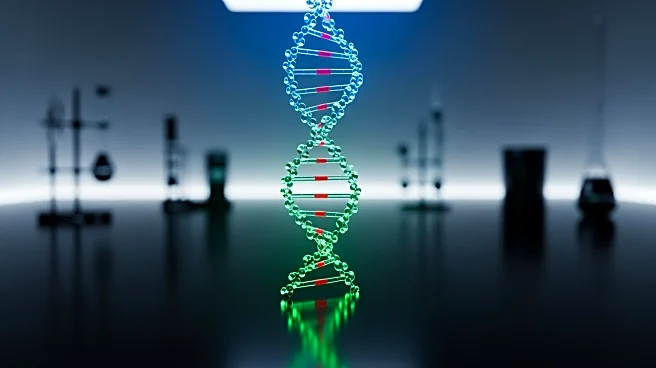What's Happening?
The DNA-encoded library market is expected to grow significantly, reaching USD 2.6 billion by 2034, driven by advancements in molecular biology and next-generation sequencing. This growth is fueled by the
increasing demand for efficient drug discovery methods, particularly in the field of neurological diseases. The market is expanding due to the high demand for effective treatments against neurodegenerative disorders, with DNA-based screening playing a crucial role. The complexity of central nervous system drug discovery has increased reliance on DNA-encoded library-based screening, further boosting market growth.
Why It's Important?
The expansion of the DNA-encoded library market is significant for the pharmaceutical and biotechnology industries, as it offers a faster and more cost-effective method for drug discovery. This technology allows for high-throughput screening of billions of compounds, increasing the likelihood of identifying lead molecules with therapeutic potential. The growing demand for novel therapeutics, especially for rising diseases and unmet medical needs, underscores the importance of this market. Advancements in genomics and bioinformatics enhance the capabilities of DNA-encoded libraries, making them more accessible and appealing to researchers and pharmaceutical companies.
What's Next?
The market is expected to continue growing, with North America holding the largest market share and Asia-Pacific projected to grow at the fastest rate. The integration of artificial intelligence in decoding DNA-encoded library screening outputs and refining compound selection is anticipated to drive further innovation. Additionally, biotech-pharma partnerships and open innovation initiatives are likely to expand, allowing smaller biotech firms and academic labs to access proprietary libraries or screening data, thus driving innovation.
Beyond the Headlines
The fragmented and evolving regulatory landscape across various regions poses a challenge to the growth of the DNA-encoded library market. The absence of cohesive guidelines regarding DEL-based drug discovery complicates operations for companies operating internationally, increasing costs and delaying development. However, advancements in genomics and bioinformatics continue to open new opportunities, enhancing the skills of DEL generation and facilitating the identification and evaluation of binding interactions between small molecules.













